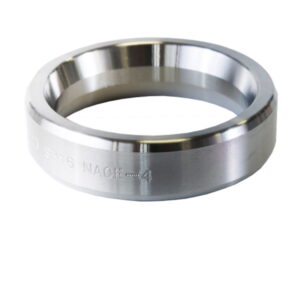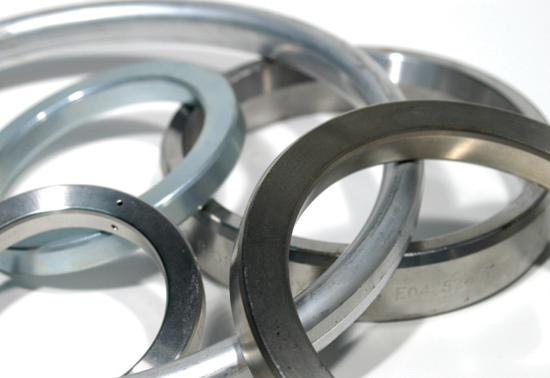Metal Ring Joints - RTJ’s
RING JOINTS: R, RX, BX
Shuk only stocks RTJ’s from API (American Petroleum Institute) Accredited Licensed manufacturers. Ring joint gaskets are precision-machined metal sealing rings and are used in situations where the sealing requirements are extremely rigorous. They are therefore suitable for high pressure and high temperature applications such as mining, oil, gas, petrochemical and off shore industries. This product range is also used extensively on valves and pipework assemblies.
Ring joint gaskets are fitted in ring groove type flanges and are manufactured in accordance with API-6A and ANSI B16.2 specifications.
The dimensions are standardised and require specially grooved flanges.
The octagonal cross section has a higher sealing efficiency than the oval and would be the preferred gasket. RTJ’s have “R” numbers assigned to them for pipe size and pressure class identification. Stock materials include soft iron, low carbon steel, 4-6 chrome (f5), 304, 304L, 316, 316L, 347, Monel, Inconel and Incoloy.
RTJ’s come in three standard styles:
Style R
The R-Type ring gasket can be ordered to two different profiles, oval or octagonal in cross-sections. Both types have identical pitch diameter as the flange groove they correspond to. These gaskets are used in pressures up to 10,000 PSI.
Style RX
RX gaskets are designed for pressures up to15,000 PSI. These gaskets are interchangeable with r-oval or r-octagonal rings used on API 6B flanges.
RX type gaskets perform superbly in 6B flanged blowout preventer stacks, which require the additional mass of the RX gasket to support the higher pressures with higher vibrations and heavier weights of these units.
Style BX
Although similar in style to the octagonal gaskets, the BX Series can only be used with 6BX flanges and 16BX hubs. BX-Gaskets have been designed for higher-pressure ratings starting at 5,000 lbs and ending with 20,000 lbs. Pitch diameters on BX gaskets are slightly larger than the pitch diameter of the flange. This forces the gasket to initially seal on its outside angles and secondly seal with its inside angles as the flange is bolted down to respective torque settings.
| Common Materials of RTJ | |||
| Material | Brinell Hardness Maximum | Temperature Limitation | Identification |
| Soft Iron | 90 | -60 to +400°C | D |
| Low Carbon Steel | 120 | -40 to +500°C | S |
| 4% -6% Cr 1⁄2% Mo | 130 | -125 to +500°C | F5 |
| Stainless Steel 304 | 160 | -250 to +650°C | S304 |
| Stainless Steel 316 | 160 | -196 to +800°C | S316 |
| Stainless Steel 321 | 160 | -250 to +870°C | S321 |
| Stainless Steel 347 | 160 | -250 to +870°C | S347 |
| Stainless Steel 410 | 170 | -20 to +500°C | S410 |
| Inconel 625 | – | +1000°C | 625 |
| Inconel 825 | – | +1000°C | 825 |
| Hastelloy C276 | – | +1000°C | C-276 |
| Duplex | – | +800°C | S31803 |
| Titanium | – | +540°C | Ti |

